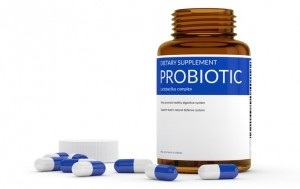IPA defends probiotic efficacy & safety after questions by Pieter Cohen in JAMA journal

Writing in JAMA Internal Medicine, Dr Cohen wrote: “Although preliminary evidence supports the use of specific strains of probiotics in certain clinical settings, such as preventing C difficile and antibiotic-associated diarrhea, widespread use, particularly among people who are healthy, has greatly outpaced the science.
“Probiotics are promoted to assist healthy adults, adolescents, and children to maintain normal intestinal function and to sustain cardiovascular, respiratory, immunologic, reproductive, and even psychological health. Despite the advertised indications, there are no large, long-term clinical trials proving that probiotics offer clinical benefits for people who are already healthy.”
‘Check the Cochrane Database’
In a detailed response to Dr Cohen’s opinion questioning probiotic safety & efficacy, the International Probiotics Association stated: “If Dr. Cohen had made the effort to search the Cochrane database, he would have found several reviews (92 to be exact). Admittedly, not all are positive, but a number are: e.g., treating acute infectious diarrhea, reducing risk for upper respiratory tract infection and prevention of antibiotic associated diarrhea. More studies and better studies are, of course, always welcome.
“It is also important to understand the difference between starter cultures that are used for the production of foods and lyophilized /finished probiotics that may be included in foods as ingredients or dietary supplements. All should be safe, in contrast to what Dr. Cohen suggests, but the former are technical aids in the production process while the latter are to serve a specific health benefit.
“The benefit for healthy individuals (however Dr. Cohen would define them) of using probiotics is that they help to maintain health, e.g. by reducing risk for upper respiratory tract infection. It is important to note that probiotics may reduce risk. This in contrast to what Dr. Cohen suggests that they do, i.e. prevent C. difficile-associated diarrhea or antibiotic-associated diarrhea; such a ‘prevention’ claim would make probiotics drugs.”
Safety
Following on from efficacy, the IPA noted that many probiotics are covered by GRAS notification with the FDA, which supports their safe use in healthy populations. “In addition, to be sold in the United States as a dietary ingredient used in a supplement, one has to provide proof of an extended history of safe use, or file a notification to the FDA demonstrating why the ingredient would be safe,” added IPA.
“Dr. Cohen brings up potential risks for consumers who take probiotics as a daily supplement, specifically infections and allergenic reactions, however he cites no specific cases of the former, and ignores federal food safety laws implemented by the FDA for conventional food and dietary supplements, including probiotic supplements, which are required to prominently indicate the presence of priority allergens in or directly under the ingredient statement.”
“It is good that the FDA has audited supplement manufacturers and we agree that failing to establish the identity, purity, strength, or composition of the final product is serious.”
Does FDA need to do more for probiotics?
Dr Cohen, who is affiliated with Cambridge Health Alliance, Harvard Medical School, called the current regulatory framework “underdeveloped” and “inadequate”, and advocated for a new regulatory framework under which probiotic microorganisms could consistently and safely be marketed to improve health.
“Such a framework would require new laws, and Congress would seem unlikely to tackle probiotics in the foreseeable future,” he wrote.
The FDA recently released a draft guidance giving firms the option of listing the number of colony forming units (CFUs) on the label, but more should be done, stated Dr Cohen.
“The agency should go further and require manufacturers, as Canadian authorities already do, to provide the specific strain or strains, and the number of live microorganisms per serving, on every bottle of probiotic supplements. This should be a routine part of ingredient disclosure,” he stated.
“The FDA should also revise its current good manufacturing practices for live microorganisms and include additional safety testing, such as identifying and eliminating potentially transferrable antibiotic resistance genes, for all bacterial strains prior to marketing, as is currently required in Canada,” he added.
The IPA said it agreed with Dr. Cohen that the FDA could improve its regulation and bring it to the same level as those in Canada and the EU.
“IPA understands that probiotic ingredients and products are unique and IPA continues to initiate projects such as developing technical standards on what manufacturing quality probiotic formulas should look like,” stated the organization.
“GMP’s are the baseline for all manufacturers of probiotic products, but stable probiotic blends and dosage formats require a whole new set of quality standards considerations.”
IPA initiatives
The IPA has taken a proactive position to drive companies towards optimal practices, and the organization will continue to help develop, publish on, and educate the regulatory and other stakeholders.
These include:
1. NDIN draft guideline - IPA recommends a ‘safe’ list, where manufacturers of strains (found within safe species list such as the GRAS and QPS lists and are intended to be used as dietary ingredients) would be responsible for establishing safety based on a list of safety requirements listed herewith. This would be similar to the requirements of global regulatory agencies, which allow strains within each listed species to be anticipated as safe because it is a requirement that additional (abbreviated) safety testing is performed.
Safety assessments would not be foregone, hence any strain identified from the safe list of species would not require a NDI notification in the US, however the safety assessments listed below should be conducted:
- Whole Genome Sequencing for Identification
- Genome Mining to demonstrate the lack of genetic regions responsible for the production of virulence factors characteristic of the Genus
- Genome Mining to demonstrate the lack of genetic regions responsible for the production of toxins characteristic of the Genus
- Appropriate toxicological studies when necessary
- Genomic Analysis for the presence of biogenic amine genetic regions
- Antibiotic Resistance profile targeting clinically relevant antibiotics
- Genomic Analysis for evidence of antibiotic resistance transfer potential
The above will result in a database of ‘exempted from notification strains’.
Moreover, any strain that has been affirmed as GRAS – whether self-affirmed GRAS or FDA GRAS, can be also added to this list.
2. Probiotic use in at risk populations – IPA jointly collaborated with ISAPP and published a guideline for ‘Probiotic usage for at risk populations’. Even though probiotics are often not approved as drugs, they are sometimes used for the prevention or treatment of disease. As opportunities for clinical use for probiotics expand, it is useful to consider the quality control standards established for production of probiotics as foods or dietary supplements and are adequate to assure safe clinical use in at-risk populations. Examples of at-risk subjects may include newborns, patients requiring critical care, and people with a weakened immune system, such as those with AIDS or on immunosuppressant therapy. This publication was intended to address this gap in understanding.
3. IPA guide to qualify a microorganism as probiotic – For more information, please click here.
Sources:
1. JAMA Internal Medicine
Published online ahead of print, doi:10.1001/jamainternmed.2018.5403
“Probiotic Safety—No Guarantees”
Author: P.A. Cohen
2. Journal of the American Pharmacists Association
Volume 56, Issue 6, Pages 680-686, doi: 10.1016/j.japh.2016.07.001
“Probiotic use in at-risk populations”
Authors: M.E. Sanders et al.


















